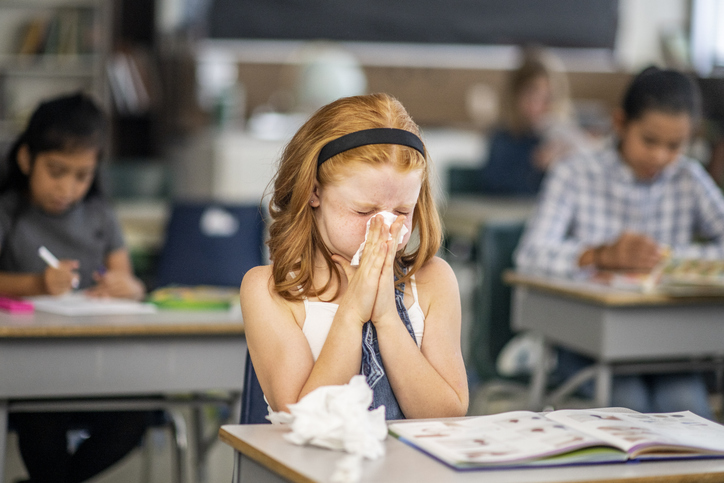The COVID-19 pandemic shuttered schools across the country and made health and safety top priority once they reopened. Although the pandemic is thankfully behind us, it remains essential to protect students and staff from all types of infectious diseases. As leaders plan for the new school year ahead, now is a good time to double down on safety.

The U.S. Centers for Disease Control and Prevention (CDC) has released consolidated, evidence-based guidance for preventing the spread of infections in K-12 schools. The guidance includes everyday actions that schools can take to prevent and control the spread of respiratory and stomach viruses, such as influenza and norovirus, and bacterial illness, such as strep throat. This guidance is designed to maximize school attendance and its benefits for all students, while also preventing the spread of infectious diseases. Being in school provides many benefits, including ongoing learning and social and emotional development.
“CDC has updated actions schools can take to prevent germs from spreading and keep kids healthy and learning,” said CDC Director Mandy Cohen, M.D., M.P.H. “This update puts lessons learned into actionable steps schools can follow to keep our kids, teachers, and school staff safe.”
This guidance is being released for consideration for the 2024-2025 school year. As school administrators are closing out the current school year and planning for the new school year in the fall, the CDC is providing the guidance now to ensure it can be part of those back-to-school preparations.
The strategies found in the new guidance are based on research and expertise the CDC gained from decades of working to prevent disease transmission in school settings. They include:
- Teach and reinforce proper hand washing and respiratory etiquette.
- Take steps for cleaner air by improving ventilation in schools. Schools should consider ventilation enhancements and design when undergoing remodeling or when undertaking new building construction to optimize clean air.
- Clean, sanitize, and disinfect, when appropriate.
- Promote vaccinations for students and staff.
When children or staff do become ill, there are additional strategies schools can implement to help slow the spread of infectious diseases, including:
- Have staff and students stay home when they are sick. The guidance makes clear what specific symptoms necessitate staying home.
- When applicable, use personal protective equipment (PPE) for school staff who are caring for sick children.
- Hand washing, respiratory etiquette, cleaning, sanitizing, and disinfecting remain important.
If illness activity is elevated, schools can consider implementing additional strategies as part of a layered approach to prevention. These additional strategies depend on several considerations, but include actions such as wearing masks, increasing space and distance between students and using cohorts, conducting illness screening, and testing to screen for illness.
The new guidance also recommends updating or developing school emergency operation plans that include infectious disease sections, and establishing and maintaining key partnerships with health departments, local medical systems, and other community health providers.
The new guidance is consistent with the recently released CDC Respiratory Virus Guidance. It is intended to support schools in developing and implementing actions and plans to guide them in maintaining a healthy and safe environment.
The full CDC guidance if available here.
